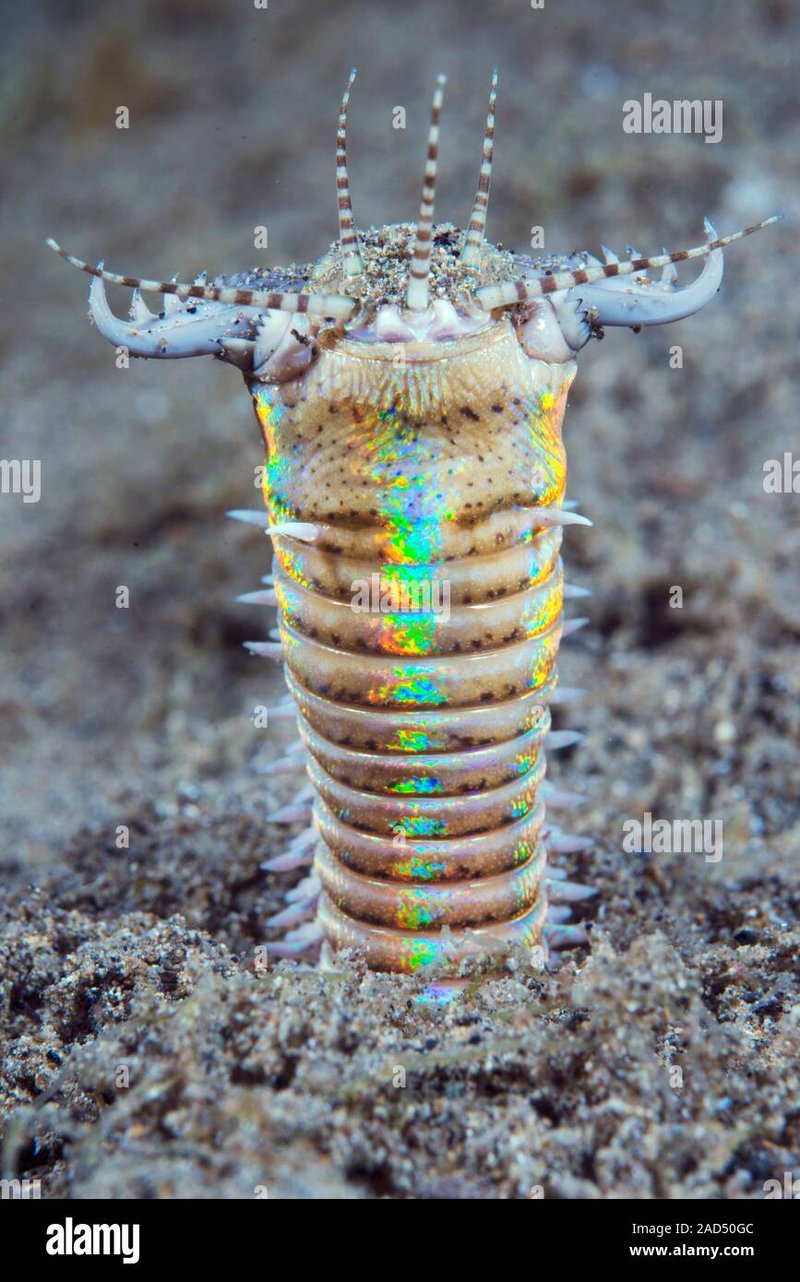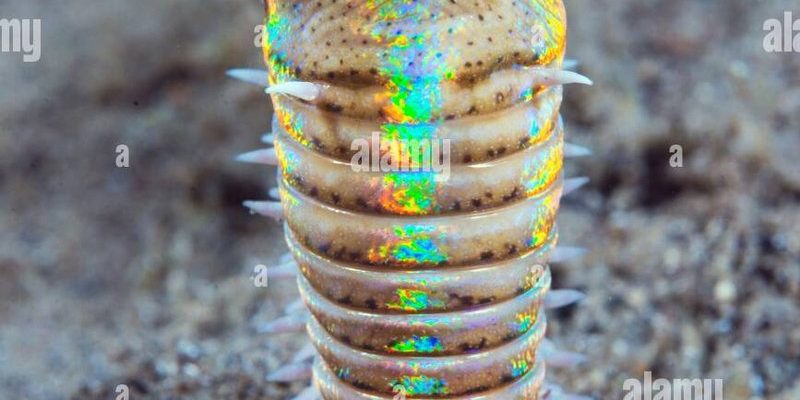
Bobbit worms are not your typical garden worms. Found in warm, tropical waters, they can grow up to 10 feet long! Their vibrant colors and unique hunting methods make them especially intriguing to marine enthusiasts. But how deep do they actually burrow in the sand? The answer may surprise you, as it’s not just about finding a cozy hideout. Let’s explore the depth of their burrowing habits and the fascinating roles they play in their ecosystems.
Understanding the Anatomy of a Bobbit Worm
Before we talk about how deep they burrow, it’s essential to understand what makes Bobbit worms, well, Bobbit worms! These marine animals belong to the family Eunicidae. They have a segmented body covered in a tough, protective skin. The head is adorned with colorful bristles and antennae, which they use to detect prey. This specialized anatomy allows them to navigate their sandy homes effectively.
You might be wondering why they are called “Bobbit worms.” The name comes from a memorable incident involving a Bobbit worm that bit off a fisherman’s finger. While that’s a wild story, it doesn’t quite capture their mysterious nature. Bobbit worms are burrowers by design, and their anatomy makes it easy for them to dig into the sandy ocean floor, where they feel safe and can ambush prey.
How Deep Do Bobbit Worms Actually Burrow?
So, how deep do these extraordinary creatures burrow? Bobbit worms can dig several feet into the sand, with some reports suggesting depths of up to 10 feet. This impressive depth isn’t just for show; it serves a purpose. Burrowing deep helps protect them from predators and offers them a cozy spot to wait for unsuspecting fish and crustaceans.
When they excavate their burrows, Bobbit worms create a U-shaped tunnel. This design not only provides shelter but also allows the worm to quickly dart out and grab prey when it passes by. It’s a clever strategy that helps them survive in the competitive underwater landscape.
Interestingly, the depths they burrow can vary depending on environmental factors like water temperature and the availability of food. In colder waters, they might not burrow as deeply, while in warmer areas, they dig in quite a bit more. This adaptability is key to their survival.
The Role of Bobbit Worms in the Ecosystem
Now, let’s take a step back and look at the bigger picture. Bobbit worms play an essential role in their ecosystems. By burrowing in the sand, they help aerate the ocean floor. This process is crucial for the health of marine environments, as it allows nutrients to circulate and reach other organisms living in the substrate.
Moreover, Bobbit worms are also a food source for larger predators. Animals like fish and octopuses can sometimes dig them out of their sandy homes. This interaction highlights the delicate web of life in the ocean. Every creature, including the Bobbit worm, contributes to the balance of its ecosystem, creating a dynamic habitat filled with life.
Burrowing Techniques of Bobbit Worms
In case you’re curious about how exactly Bobbit worms burrow, it’s quite fascinating. They use their powerful muscles to push through the sand. Their bristly appendages help grip the sediment, making it easier for them to move and twist with precision.
Here’s how it works:
- Digging In: Bobbit worms will use their muscular bodies to create a tunnel, compressing the sand as they go.
- Staying Hidden: Once they reach their desired depth, they can’t just sit around; they need to remain partially buried to ambush prey.
- Flexible Movement: Their ability to bend and manipulate their body helps them adjust their burrowing technique based on the type of sand they’re in—coarse or fine.
This combination of strength and dexterity is pretty impressive for a creature that you might not think much about at first glance.
Benefits of Burrowing Deeply
The depth at which Bobbit worms burrow offers them several advantages. First, being deep in the sand reduces the risk of predation. Many fish and other predatory animals aren’t skilled at digging, letting these worms live a bit safer.
Second, burrowing allows them to access various nutrients found deeper in the substrate. The deeper they go, the fresher the food options. It’s a classic case of “out of sight, out of mind” when it comes to staying safe while also feeding.
Lastly, their burrowing behavior contributes to overall sediment dynamics. As they tunnel, they help recycle nutrients back into the ecosystem, which benefits nearby organisms. It’s a reminder of how interconnected life in the ocean can be!
Bobbit worms might be hidden beneath the sand, but their impact is anything but subtle. From their impressive burrowing abilities to their crucial role in the marine ecosystem, these creatures are truly remarkable. Knowing how deep they burrow helps us appreciate their adaptations and the delicate balance of underwater life.
So, the next time you find yourself by the beach or diving in tropical waters, think about the hidden world below. Beneath the waves, Bobbit worms are busy at work, ensuring that life continues to thrive in the ocean. Their story reminds us of the wonders of nature and the importance of every creature, no matter how small or hidden they might be.

